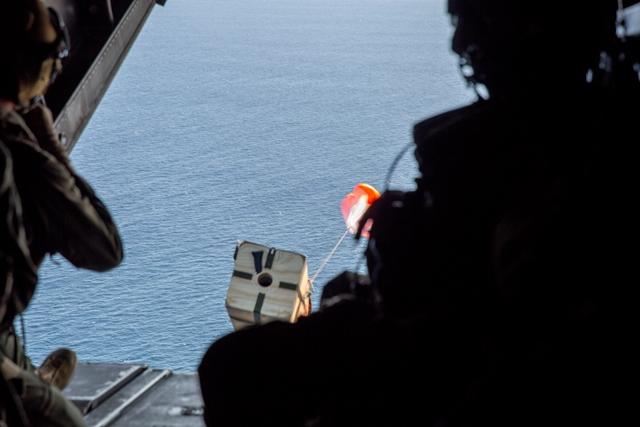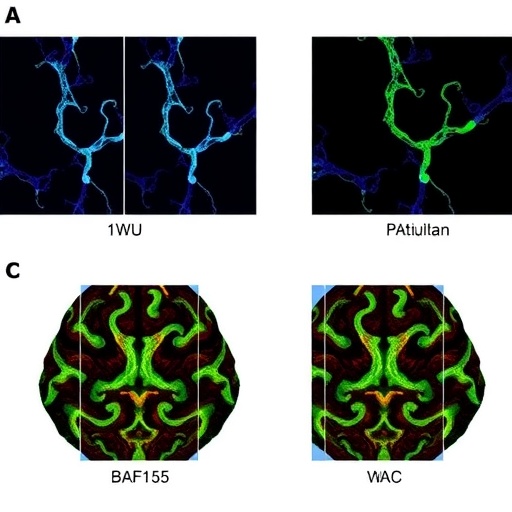
Credit: (U.S. Marine Corps photo by Lance Cpl. Juan Anaya)
ARLINGTON, Va.–Flying several thousand feet above the Pacific Ocean, an air crew and a scientist from Woods Hole Oceanographic Institution tossed cylindrical floats from a U.S. Marine Corps MV-22 Osprey aircraft. Packed with data-gathering sensors to measure underwater conditions, the floats fell fast before orange parachutes opened to ease splashdown.
The action marked the first time such sensor-laden profiling floats, also called buoys, were deployed from a Marine Corps aircraft. This will increase naval knowledge of the ocean battlespace–including the littorals (areas of water close to shoreline), which are crucial to expeditionary and amphibious operations.
The Office of Naval Research (ONR) sponsored the effort, which involved Woods Hole and the Naval Oceanographic Office (NAVO) and occurred during this year’s Trident Warrior, a large-scale fleet exercise conducted by the Navy and Marine Corps to test technology and tactics.
NAVO collects global oceanographic and meteorological data to create ocean-prediction models to support naval operations.
“Deployment of these floats creates a more vivid picture of how the ocean and atmosphere interact, including wind speed and water temperature and salinity,” said Dr. Scott Harper, a program officer in ONR’s Ocean Battlespace and Expeditionary Access Department. “They’re critical for compiling an abundance of data for the most up-to-date prediction models.”
When dropped, the floats–which contain sophisticated scientific instruments–sink to a predetermined depth, rise to the surface, transmit data via satellite to NAVO and descend again. They do this repeatedly over multiple months.
Dr. Steven Jayne, a Woods Hole senior scientist, oversaw the float deployment, which originally was supposed to occur during this summer’s Rim of the Pacific exercise–RIMPAC–the world’s largest international maritime warfare exercise. Unfortunately, because of the COVID-19 pandemic, RIMPAC dramatically scaled down its scope, and Jayne and his team had to wait until Trident Warrior in the fall to conduct their research.
Traditionally, oceanographic sensor floats are deployed in deeper water from naval ships or aircraft like C-130s or P-3s. But greater naval focus on the littorals in recent years sparked discussions about using Marine Corps assets like the Osprey.
“Ospreys go wherever Marines go,” said Jayne. “Using them for sensor deployment expands both the versatility of naval oceanographic tools and the expeditionary capabilities of the Marine Corps.”
The sensor floats will drift for several months and provide real-time data to NAVO, which is working with the Naval Research Laboratory to create ocean-prediction models for the Navy and Marine Corps.
In addition to the littorals, ONR sponsors Jayne’s research using sensor floats for hurricane forecasting and studying polar conditions.
###
Media Contact
David Smalley
[email protected]
Original Source
https:/




